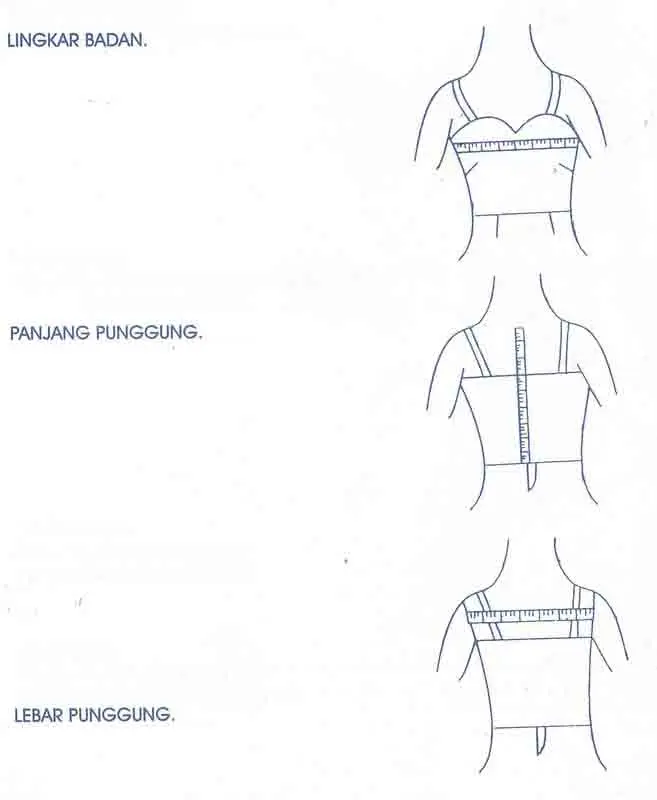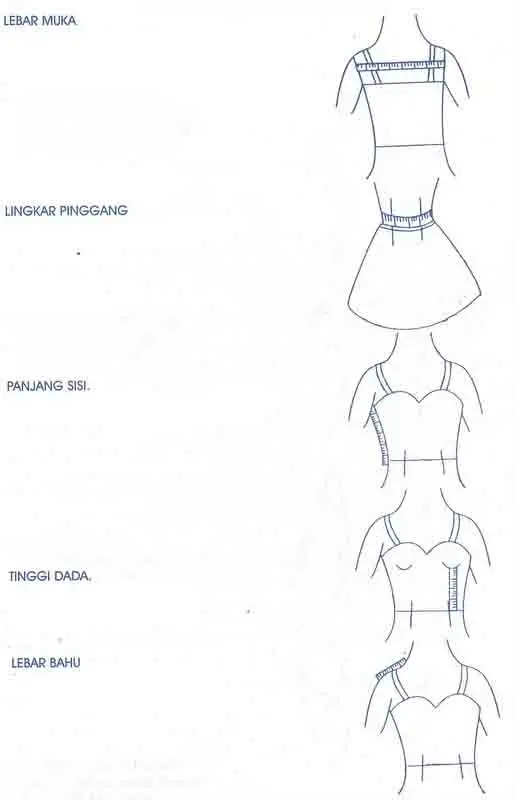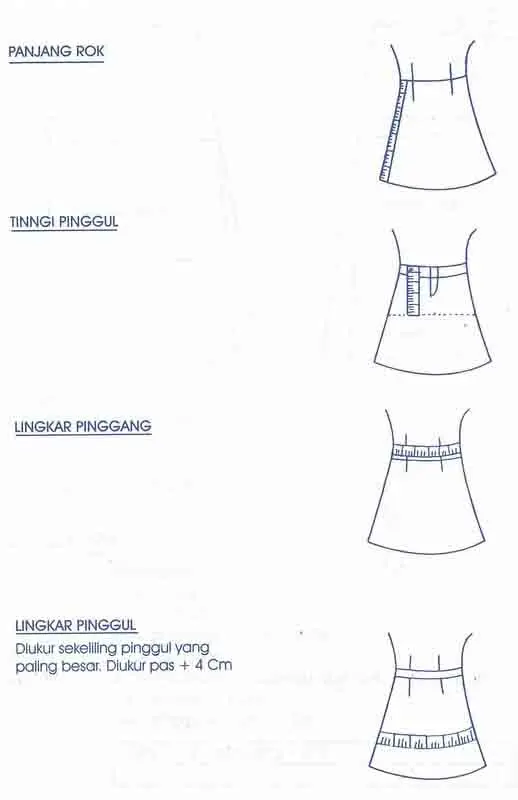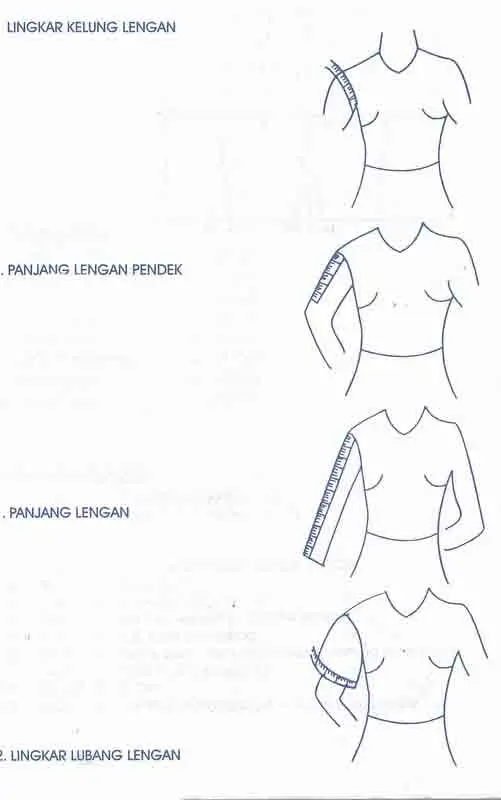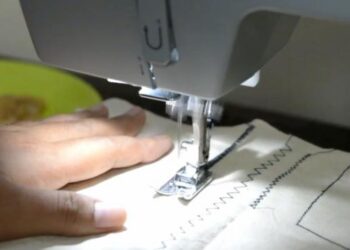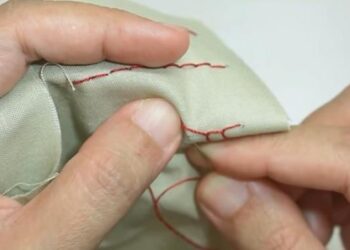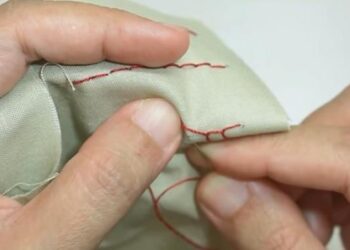In order to produce a shirt, we need a few steps in preparation for sewing. It is these steps that determine the end result of our stitches. The preparation in question is the process of taking measures on sewing techniques, which will be explained in detail in this article.
Before sewing, a tailor will definitely take body measurements. Why is body measurement necessary? Each human has a varied body shape, so the size for one person cannot be used on another. That’s why body measurements are needed to sew clothes.
Until now, there are often tailors who ignore this stage of measurement of the body. They are more likely to believe in the size of the old clothes than the person to make the clothes. Be the old clothes that are taken in size to be cheated into new sizes. This can sometimes cause discomfort when new clothes are finished and worn. However, the size taken directly from the body, will give maximum results rather than taking the size of the old shirt.
The process of taking this measure itself also depends on a person’s skill, precision, and accuracy. Measuring the right size will result in clothes that are not only beautiful and attractive when viewed, but also comfortable to wear by the wearer.
To produce the right measurements, here are the principles that must be applied :
1. The person to be taken in size should be in an upright position, should not bend, the abdomen should not be bent.
2. The person to be taken in size should not wear thick and large clothing. Thick, large clothes can outwit size.
3. In taking the size, the tailor uses an un tape that is not damaged and the number is still clear.
For a more detailed explanation, the size retrieval process is broken down into the following sections :
a. Measuring Women’s Bodies
How to measure both women’s and men’s bodies actually has the same principles. It’s just that the parts of the woman’s body are very complex, so the parts of the body that need to be taken are also more sized.
Here are the steps to take measurements of an adult woman’s body:
1. Before measuring the body, first tie the band or raffia strap on the waist to determine the fall of the waist. After that, just start measuring.
2. Measuring neck circumference, measured around the neck.
3. Measure the circumference of the body, measuring the circumference of the largest circumference of the body, which passes above both points of the breast. Take the size of the fit then add 4 cm.
4. Waist circumference, measured waist circumference is the smallest circumference of the waist circumference that passes through the navel. Taken the right size.
5. Pelvic circumference 1, measured from the waist band down perpendicularly at a distance of 13 then measured circularly. Take the size of the fit then plus 4 cm.
6. Pelvic circumference 2, measurements are carried out on the pelvis whose position is the larger measured circumference, i.e. the position of the waist strap drops upright at a distance of 20 cm. Take the right size, then add 4 cm.
7. Pelvic height, measuring how much distance from the waist line to the pelvic line boundary.
8. Front width/chest width, measurements are made from the left arm line to the right arm line at a position of 5 cm below the neck curves.
9. Face length/ chest length, measurements are carried out from the bending point of the front neck to the waistband boundary.
10. Body side length, measured from the armpit line to the waistline.
11. Chest height, measured from the top point to the waistline.
12. Shoulder length, the shoulder length is done from the highest shoulder point to the lowest shoulder point.
13. Width of the back, measured from the left arm up to the right arm at a position of 10 cm below the lower spine.
14. Back length, measurements are made from the protruding spine (the lowermost neckbone) to the waistline boundary has been tied raffia strap.
b. Measuring Skirts/Pants
The technique of measuring skirts/pants is actually about the same. It’s just that, for pants measurement there is an addition of pesak measurements. Here’s how to measure skirts/pants:
For measurement of waist circumference and pelvic circumference is the same as in adult female body measurements, i.e.
:
1. Waist circumference, measured waist circumference is the smallest circumference of the waist circumference that passes through the navel. Taken the right size
2. Pelvic circumference, the pelvis whose position is the larger is measured circumference. Take the size of the fit then add 4 cm.
3. Knee height, measuring how much distance between the waistline to the knee limit. In this measurement, the skirt can be extended or shortened from the knee limit according to the wearer’s request.
4. Seat height, calculates the distance between the waistline to the seat limit.
In measurements for the manufacture of pants, there are additional measurements as follows:
1. Pesak circumference, measured from the back waist line through both thighs to the front waist limit.
2. Length of pants, measuring from waist line up to 2 cm below the ankles (if trousers), or according to the wearer’s wishes.
3. 1/2 thigh circumference, measure the surroundings of the thigh circle, take 1/2 of the thigh circle, then add 2 cm (for plain models). Or measure the largest part of the thigh, from the back to the front.
4. 1/2 knee circumference, measuring around the knee. The result size is split in half, then add 3 cm.
5. 1/2 foot circumference, measuring the circle of the lower leg. For the narrow width of the size, adjust the user’s request.
Here’s a table of women’s standard sizes (in centimeters)
|
Measured parts |
S |
S |
M |
M |
L |
L |
|
Body Circumference |
80 |
86 |
86 |
90 |
92 |
98 |
|
Waist circumference |
64 |
66 |
68 |
72 |
74 |
78 |
|
Neck circumference |
33 |
34 |
35 |
36 |
37 |
38 |
|
Chest length |
30 |
31 |
32 |
33 |
33 |
34 |
|
Chest width |
30 |
31 |
32 |
33 |
34 |
35 |
|
Back length |
34 |
35 |
36 |
37 |
38 |
39 |
|
Back width |
32 |
33 |
34 |
35 |
35 |
36 |
|
Shoulder width |
11 |
11 ½ |
12 |
12 ½ |
13 |
13 ½ |
|
Side length |
15 |
16 |
16 |
17 |
17 |
18 |
|
Sleeve length |
20/50 |
21/52 |
22/54 |
23/55 |
23/56 |
2457 |
|
Armscye circumference |
40 |
42 |
43 |
44 |
46 |
48 |
|
Arm circumference |
30 |
32 |
33 |
34 |
34 |
35 |
|
Wrist circumference |
16 |
17 |
18 |
19 |
20 |
21 |
|
Chest height |
12 |
12 ½ |
12 ½ |
13 |
13 |
13 ½ |
|
Breast spacing |
17 |
17 ½ |
17 ½ |
18 |
18 ½ |
19 |
|
Skirt length |
50 |
55 |
60 |
65 |
65 |
70 |
|
Hip height |
16 |
17 |
17 |
18 |
19 |
20 |
|
Hip circumference |
84 |
88 |
90 |
96 |
98 |
108 |
|
Trousers |
||||||
|
Waist circumference |
64 |
66 |
68 |
72 |
74 |
78 |
|
Trouser length |
86 |
90 |
92 |
96 |
98 |
102 |
|
Crotch |
60 |
63 |
65 |
69 |
70 |
75 |
|
½ thigh |
25/28 |
26/29 |
28/31 |
29/32 |
30/33 |
31/34 |
|
½ knee |
20/21 |
21/22 |
22/23 |
23/24 |
24/25 |
25/26 |
|
½ Leg circumference |
16/17 |
17/18 |
18/19 |
19/20 |
20/21 |
21/22 |
|
Measured parts |
S |
S |
M |
M | L | L |
|
Body Circumference |
80 |
86 |
86 |
90 |
92 |
98 |
|
Waist |
64 |
66 |
68 |
72 |
74 |
78 |
|
Neck |
33 |
34 |
35 |
36 |
37 |
38 |
Description:
To determine the size of 1/2 of the thigh circumference, 1/2 knee circumference, and 1/2 leg circumference, the guidelines used are as follows:
- Small size for plain models, without the use of pleats, then the number used is the number that is in front of the slash.
- Large size for models that use double pleats, then the number used is the number that is behind the slash
.c. Measuring Arms
To measure the size of the arm, the way is as follows:
- Arm squeath, measured in a circular way, from the point of the shoulder through the armpit to the original point.
- The circumference of the arm, measuring the arm in a circular manner, the size is taken as desired.
- Elbow length, measured from the base of the arm down to the elbow.
- The length of the arm, measured by the distance from the base of the arm down to the wrist.
- Elbow circumference, elbow position bent, then measured circular fit.
- Wrist circumference, measure the wrist in a circular manner, coupled with the desired looseness.
Good luck and thank you for reading.


